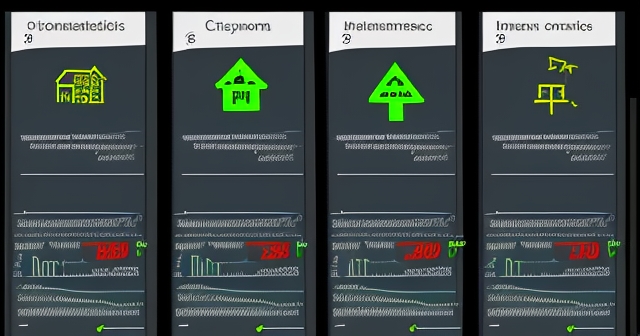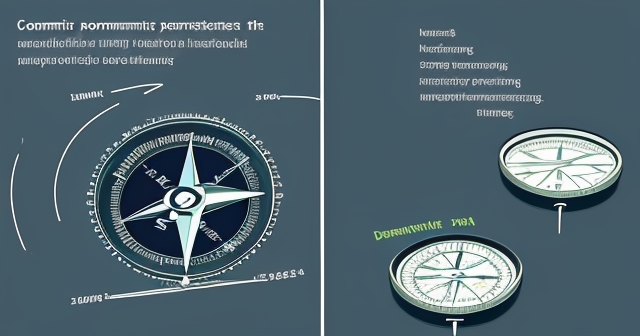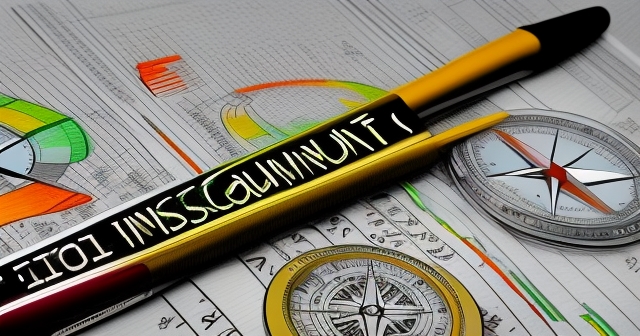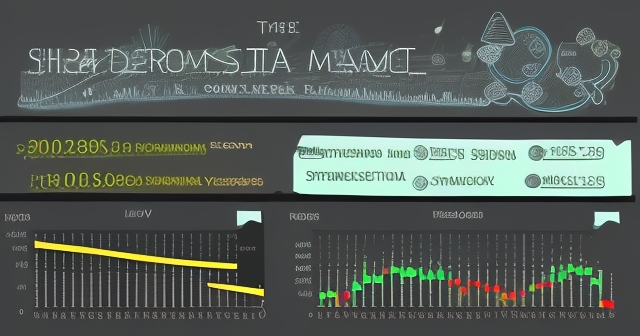
Leading Indicators Definition Economics: 7 Key Signals to Navigate Future Economic Activity
Table of Contents
ToggleThe Compass of the Economy: Navigating Future Economic Activity with Leading Indicators
Welcome to our exploration of the fascinating world of economic indicators. Think of these statistics not just as dry numbers, but as the vital signs of an economy, offering crucial clues about its health and future direction. Just as a doctor uses a patient’s pulse and temperature, investors, businesses, and policymakers use economic indicators to gauge the economic climate. Understanding these signals is a cornerstone of informed decision-making, whether you’re charting a course for national policy, planning business strategy, or navigating the complexities of investment markets.
In this journey together, we will delve into a specific, powerful category of these signposts: leading indicators. These are the forward-looking signals that change *before* the broader economy begins to shift, offering precious early warnings of potential upturns or downturns. By the end of our discussion, you will have a deeper appreciation for how these seemingly simple data points can act as a compass, guiding us through the often uncertain seas of the business cycle.

Before we focus specifically on the future, let’s understand the broader landscape of economic indicators. These statistics are generally categorized into three main types, based on their timing relative to the overall economic cycle: leading, lagging, and coincident. Each serves a unique purpose in painting a full picture of economic activity.
- Leading Indicators: These are the headlights, designed to signal upcoming changes. They move *before* the general economic trend. Think of them as offering predictions or forecasts.
- Coincident Indicators: These are the speedometer, telling us what’s happening right now. They move *at the same time* as the general economy. They reflect the current state of economic activity.
- Lagging Indicators: These are the rearview mirror, confirming trends that have already occurred. They move *after* the general economic trend has begun. They help confirm whether a previously identified shift is indeed taking hold or has already passed its peak/trough.
While all three types are important for a comprehensive view, it is the leading indicators that capture much of the attention, especially for those focused on forecasting and strategic positioning. They are the tools that promise a glimpse, however imperfect, into what might lie ahead.
Focusing on the Future: The Power of Leading Indicators
Why dedicate our time primarily to leading indicators? Because their core function is anticipation. In the world of finance, business, and policy, getting ahead of the curve can make all the difference. These indicators provide policymakers with insights needed to potentially adjust monetary or fiscal policy preemptively. They offer businesses clues about future demand, helping them plan production, inventory, and hiring. For investors, they are vital for adjusting portfolios, predicting potential market turns, and timing entry or exit points in various asset classes, including stocks, bonds, and even foreign exchange.
Their predictive power isn’t magic; it stems from the fact that these indicators often reflect early stages of economic decisions or conditions that ripple through the economy over time. For example, a decision by a company to increase orders for durable goods today will eventually lead to increased production and potentially hiring down the line. A change in consumer confidence can precede shifts in spending patterns.
Understanding these precursors allows us to look beyond the current headlines and try to discern the underlying momentum building within the economy. While no single indicator is a perfect crystal ball, monitoring a set of reliable leading indicators offers a powerful framework for economic forecasting and strategic decision-making. They are the whispers of the future, and learning to listen to them is a valuable skill.

Decoding Key Leading Signals: The Yield Curve
One of the most watched and historically reliable leading indicators is the Yield Curve. What is it? Simply put, the yield curve is a line plotting the interest rates (yields) of bonds with different maturities (e.g., 3-month, 2-year, 10-year, 30-year) issued by the same borrower, typically a government like the U.S. Treasury.
Normally, investors demand higher interest rates for locking up their money for longer periods due to increased risk and inflation uncertainty over time. This results in a “normal” yield curve that slopes upwards – long-term yields are higher than short-term yields.
However, sometimes the curve changes shape. A “flat” curve means there’s little difference between short and long-term yields. Most significantly for forecasting, an “inverted yield curve” occurs when short-term yields rise above long-term yields. This is unusual because it means investors are willing to accept lower returns for longer investments. Why would they do this?
An inverted yield curve often signals expectations of future interest rate cuts by the central bank, which typically happen during economic slowdowns or recessions. It suggests investors foresee weaker economic conditions ahead, prompting them to buy longer-term bonds (seen as safer havens), driving up their prices and thus lowering their yields relative to short-term bonds. Historically, inversions of certain parts of the U.S. Treasury yield curve (like the 2-year/10-year spread) have preceded most recessions with a reasonable lead time, making it a potent predictive signal.
Interpreting the yield curve requires understanding which parts are inverting and by how much, but its fundamental insight—that bond market participants collectively anticipate lower future rates due to expected economic weakness—makes it an indispensable leading indicator.

Decoding Key Leading Signals: Housing Market & Manufacturing Activity
Two other powerful leading indicators offer insights from critical sectors of the economy: the housing market and the manufacturing sector. Let’s look at New Housing Starts and Building Permits.
Why are these leading? Because building a new house is a significant investment decision based on confidence about future economic conditions, potential buyer demand, and access to financing. Before a house is built, a permit is obtained, and then construction begins (housing starts). A rise in building permits and starts indicates that builders and developers are optimistic about the economy and anticipate future sales. Conversely, a decline suggests caution or pessimism, often preceding a slowdown in economic activity as construction jobs decrease and related spending (on appliances, furniture) falls.
Next, consider the Purchasing Managers’ Index (PMI). This is a survey-based indicator that tracks sentiment among purchasing managers in key sectors like manufacturing and services. Purchasing managers are at the forefront of supply chains; their decisions on ordering raw materials and components directly reflect their expectations of future production levels and customer demand. A PMI reading above 50 generally indicates expansion in the sector, while a reading below 50 suggests contraction.
The PMI is leading because changes in purchasing managers’ orders and inventory decisions happen relatively early in the economic cycle. If managers are ordering more (PMI rising), it suggests they expect increased sales and production in the near future. If they are cutting orders (PMI falling), they anticipate a slowdown. The manufacturing PMI, in particular, has a strong track record as a leading indicator for the broader industrial economy and overall business cycle.

Decoding Key Leading Signals: Confidence & The Labor Market
Economic activity is fundamentally driven by human decisions – whether to spend, save, hire, or invest. Two leading indicators capture this crucial human element: the Consumer Confidence Index (CCI) and Initial Jobless Claims.
The Consumer Confidence Index (CCI), often reported by organizations like The Conference Board, surveys consumers about their present economic situation and, more importantly, their outlook for the future regarding income, employment, and business conditions. When consumers feel confident about their job security and future prospects, they are more likely to make significant purchases (like cars or appliances) and generally increase spending. Since consumer spending is a major driver of the economy (contributing a significant portion of GDP), shifts in confidence often precede changes in spending levels. A sharp decline in confidence can signal upcoming reductions in consumer demand, leading businesses to scale back.
On the labor market front, while the overall unemployment rate is a classic lagging indicator (it reflects past hiring/firing), Initial Jobless Claims are considered leading. This weekly data point measures the number of people filing for unemployment benefits for the first time. An increase in initial claims suggests that companies are beginning to lay off workers, which can be an early sign of weakening business conditions or reduced demand. Conversely, a decrease in claims indicates that fewer people are losing their jobs, suggesting a healthier or improving labor market, even if the official unemployment rate hasn’t yet moved significantly.
Both consumer confidence and initial jobless claims offer timely, sentiment- or activity-based insights that can foreshadow broader shifts in economic activity before they become apparent in aggregate data like retail sales or GDP.

Decoding Key Leading Signals: Money Supply & Durable Goods
Let’s look at two more traditional, yet still relevant, leading indicators: the Money Supply and Durable Goods Orders.
Changes in the Money Supply (often measured by metrics like M2, which includes physical currency, checking accounts, savings accounts, and money market funds) can sometimes act as a leading indicator, particularly reflecting the availability of credit and liquidity in the financial system. An expansion in the money supply can signal easier credit conditions, which can fuel investment and spending in the future. Conversely, a contraction or slowing growth in the money supply might indicate tighter credit, which can dampen future economic activity. However, the link between money supply and economic activity can be complex and affected by various factors, making it less consistently reliable as a standalone predictor compared to some other indicators.
Durable Goods Orders measure new orders placed with manufacturers for goods designed to last three years or more (like machinery, vehicles, and electronics). These are often large-ticket items, and businesses’ willingness to invest in new equipment or consumers’ decisions to buy new cars are based on their future expectations. A rise in new orders for durable goods indicates that businesses are investing and consumers are making significant purchases, suggesting confidence in the future. A decline can signal anticipated weakness. This indicator is particularly sensitive to the business cycle and can provide early clues about future industrial production and investment spending.

By monitoring these various signals – from the financial markets (Yield Curve) to specific sectors (Housing, Manufacturing) and broad sentiment/activity (Confidence, Jobless Claims, Money Supply, Durable Goods Orders) – we build a multi-faceted view of potential future economic activity.
The Symphony of Signals: Composite Leading Indexes
While analyzing individual leading indicators is insightful, relying on just one or two can be misleading. Economic signals can sometimes conflict, or one indicator might be influenced by a unique factor not representative of the broader economy. This is where composite indexes become incredibly valuable.
A composite leading index combines several individual leading indicators into a single index number. The most widely recognized example is The Conference Board Leading Economic Index (LEI). This index for the U.S., for instance, typically comprises ten components, including many of the indicators we’ve discussed (like Average weekly hours, manufacturing; Average weekly initial jobless claims; Manufacturers’ new orders, consumer goods and materials; ISM Index of New Orders; Manufacturers’ new orders, nondefense capital goods excluding aircraft; Building permits, new private housing units; Stock prices, 500 common stocks; Leading Credit Index; Interest rate spread, 10-year Treasury minus federal funds rate; and Index of consumer expectations for business conditions).
By aggregating multiple diverse indicators, a composite index aims to smooth out the volatility of individual data points and provide a more reliable, synthesized outlook on the near-term direction of the overall economy. A sustained decline in the composite LEI is historically a more reliable predictor of a coming recession than a downturn in any single component.
The Conference Board also produces coincident and lagging indexes (CEI and LAG) to provide a full picture of where the economy stands currently and how it has performed historically. Tracking the movements of the LEI relative to the CEI, for example, can offer further insights into the business cycle’s phase. For instance, The Conference Board recently reported that the U.S. LEI declined by 0.3% in February 2025, after a larger decrease in August 2024. While the pace of decline has moderated compared to the preceding six months, this sustained weakness in the LEI still points to potential headwinds for the U.S. economy in the near future, indicating a heightened risk of a continued slowdown or mild contraction, despite recent resilience in coincident data like employment and GDP.
Using a composite index like The Conference Board’s LEI allows us to consider the “symphony” of economic signals rather than just isolated notes, providing a more robust basis for economic forecasting.
The Art of Interpretation: Limitations and Nuances
While powerful tools, leading indicators are not infallible. Using them effectively requires understanding their limitations and the art of interpretation. Remember, they are indicators, not certainties. Here are some key nuances to consider:
- False Signals: Leading indicators can sometimes predict a downturn or upturn that doesn’t materialize, or is significantly delayed. For example, a specific indicator might dip due to a temporary event (like a severe weather pattern affecting construction) rather than a fundamental shift in the business cycle.
- Conflicting Signals: Different leading indicators might point in different directions simultaneously. One might suggest slowing growth (e.g., falling PMI), while another suggests continued strength (e.g., resilient housing starts). This requires careful analysis and weighing the evidence from multiple sources.
- Varying Lead Times: The time between a leading indicator signaling a change and the actual economic shift occurring can vary significantly. The yield curve might invert many months before a recession, while a sudden drop in initial jobless claims might precede a labor market recovery by only a few weeks. This makes timing difficult.
- Structural Changes: The economy is constantly evolving. Structural changes (like shifts in technology, globalization, or consumer behavior) can alter the relationship between traditional indicators and future economic activity. What worked perfectly as a predictor in the past might become less reliable over time.
- External Factors: Unforeseen global events (like a pandemic, geopolitical conflict, or supply chain shock) or significant policy changes (major fiscal stimulus or monetary tightening) can rapidly override or distort the signals from traditional leading indicators.
Effective use of leading indicators involves viewing them as probabilities, not certainties. It requires combining them with analysis of lagging and coincident indicators, understanding the current economic context, considering external risks, and being prepared for the possibility of false or misleading signals. It’s an ongoing process of monitoring, analysis, and judgment, not a simple checklist.
Modern Horizons: Big Data, AI, and the Future of Indicators
The landscape of economic indicators is not static. With the rise of big data, advanced data analytics, and artificial intelligence (AI), we are seeing the potential for new types of indicators that could complement or even surpass traditional ones. These modern approaches leverage vast, sometimes unconventional, datasets to provide insights into economic activity in near real-time.
Think about data scraped from online job postings (like Help Wanted Online, HWOL), credit card transaction data, satellite imagery tracking retail parking lots or shipping activity, or even sentiment analysis from social media. These sources can offer much higher frequency data than traditional monthly or quarterly releases, providing more granular and timely views of specific sectors or consumer behavior.
Big data and AI techniques can also be used to analyze complex relationships between existing indicators or to build new predictive models that might capture subtle shifts missed by standard approaches. This opens up exciting possibilities for enhancing the accuracy and timeliness of economic forecasting.
However, this evolution also brings challenges. Data quality, privacy concerns, the risk of overfitting models, and the “black box” nature of some AI predictions are issues that need careful consideration. While these new frontiers hold promise, they are still relatively nascent compared to the decades of historical data and testing behind traditional indicators like the yield curve or PMI. The future of economic forecasting will likely involve a blend of tried-and-true indicators alongside innovative data-driven approaches.
Applying Indicators to Your Strategy
So, how do you take these complex economic signals and apply them to your own investment or trading strategy? This is where the rubber meets the road. Economic indicators, particularly leading ones, provide the macroeconomic context within which markets operate. Understanding the likely direction of the economy can inform your strategic asset allocation, sector rotation decisions, and overall risk positioning.
For instance, if a range of leading indicators (like an inverted yield curve, falling PMI, and declining consumer confidence) collectively point towards an impending economic slowdown or recession, you might consider shifting your portfolio towards more defensive assets (like bonds or consumer staples stocks), reducing exposure to cyclical sectors (like technology or industrials), or even increasing cash holdings. Conversely, if indicators signal a likely expansion (rising housing starts, improving PMI, increasing confidence), you might lean into growth-oriented investments.
For active traders, including those in the dynamic foreign exchange market, economic indicators are fundamental. Forex trading often involves speculating on the relative strength of different economies, and economic data releases are major market movers. Leading indicators provide the backdrop for anticipating future shifts in economic strength, which can influence currency valuations. For example, strong leading indicators in one country compared to another might suggest its currency is poised for appreciation. Interpreting these reports in real-time is a critical skill for FX traders.
If you’re considering entering the world of foreign exchange trading or exploring other CFD instruments based on these economic insights, choosing the right platform is essential. Moneta Markets is a platform worth considering. Based in Australia, it offers access to over 1000 financial instruments, catering to both novice and experienced traders seeking a wide range of trading opportunities.
Applying economic indicators isn’t about predicting exact market movements every day, but rather understanding the broader economic tides. It helps you make more informed decisions about the general direction and potential risks, integrating macroeconomic analysis into your fundamental approach to investing and trading.
Conclusion: Navigating the Economic Seas with Foresight
We’ve journeyed through the world of economic indicators, placing a particular focus on the vital role of leading indicators. We’ve seen how statistics like the yield curve, housing data, PMI, consumer confidence, jobless claims, money supply, and durable goods orders can serve as crucial signposts, offering potential glimpses into the future direction of economic activity. We’ve also explored the value of composite indexes like The Conference Board’s LEI in providing a synthesized, more reliable forecast by combining multiple signals.
Understanding and interpreting these indicators is an indispensable skill for anyone involved in financial markets, business strategy, or economic policy. They equip us with a framework for forecasting potential turning points in the business cycle and making more informed decisions based on anticipated economic conditions.
However, we’ve also acknowledged the limitations – the potential for false signals, conflicting data, and the impact of external factors or structural changes. The effective use of leading indicators is not a precise science but an art that requires careful analysis, consideration of multiple data points, and a healthy dose of judgment. It involves combining insights from leading, coincident, and lagging indicators to form a holistic view.
As technology advances, we may see the emergence of new, data-driven indicators adding further layers to our analytical toolkit. Yet, the fundamental principles of using indicators as probabilistic guides to anticipate economic shifts will remain relevant.
By incorporating the analysis of leading economic indicators into your approach, you gain a valuable perspective, transforming yourself from someone merely reacting to the news into someone who can potentially anticipate the economic forces shaping the future. Keep monitoring these signals, keep learning, and let them serve as your compass in navigating the dynamic world of economics and finance.
| Type of Indicator | Function | Timing |
|---|---|---|
| Leading Indicators | Signal upcoming changes (predictions) | Before general economic trends |
| Coincident Indicators | Reflect current economic activity | At the same time as general economy |
| Lagging Indicators | Confirm trends already occurred | After general economic trends |
| Leading Indicators | Description |
|---|---|
| Yield Curve | Plots interest rates of bonds across different maturities. |
| Consumer Confidence Index | Measures consumer sentiment about current and future economic conditions. |
| Durable Goods Orders | Measures new orders for goods designed to last three years or more. |
| Economic Indicator | Impact | Strategy Consideration |
|---|---|---|
| Inverted Yield Curve | Generally indicates a potential recession. | Shift towards defensive assets. |
| Increasing PMI | Signals economic expansion. | Consider growth-oriented investments. |
| Declining Jobless Claims | Indicates a healthier labor market. | Maintain or increase exposure to stocks. |
leading indicators definition economicsFAQ
Q:What are leading indicators in economics?
A:Leading indicators are statistics that can predict future economic activity by changing before the economy shifts.
Q:How are leading indicators useful for businesses?
A:They provide insights into potential future demand, helping businesses plan production and inventory.
Q:Can leading indicators predict recessions?
A:Yes, indicators like the inverted yield curve have historically preceded recessions by signaling expected economic downturns.
You may also like
Calendar
| 一 | 二 | 三 | 四 | 五 | 六 | 日 |
|---|---|---|---|---|---|---|
| 1 | 2 | 3 | 4 | 5 | 6 | 7 |
| 8 | 9 | 10 | 11 | 12 | 13 | 14 |
| 15 | 16 | 17 | 18 | 19 | 20 | 21 |
| 22 | 23 | 24 | 25 | 26 | 27 | 28 |
| 29 | 30 | 31 | ||||
發佈留言
很抱歉,必須登入網站才能發佈留言。